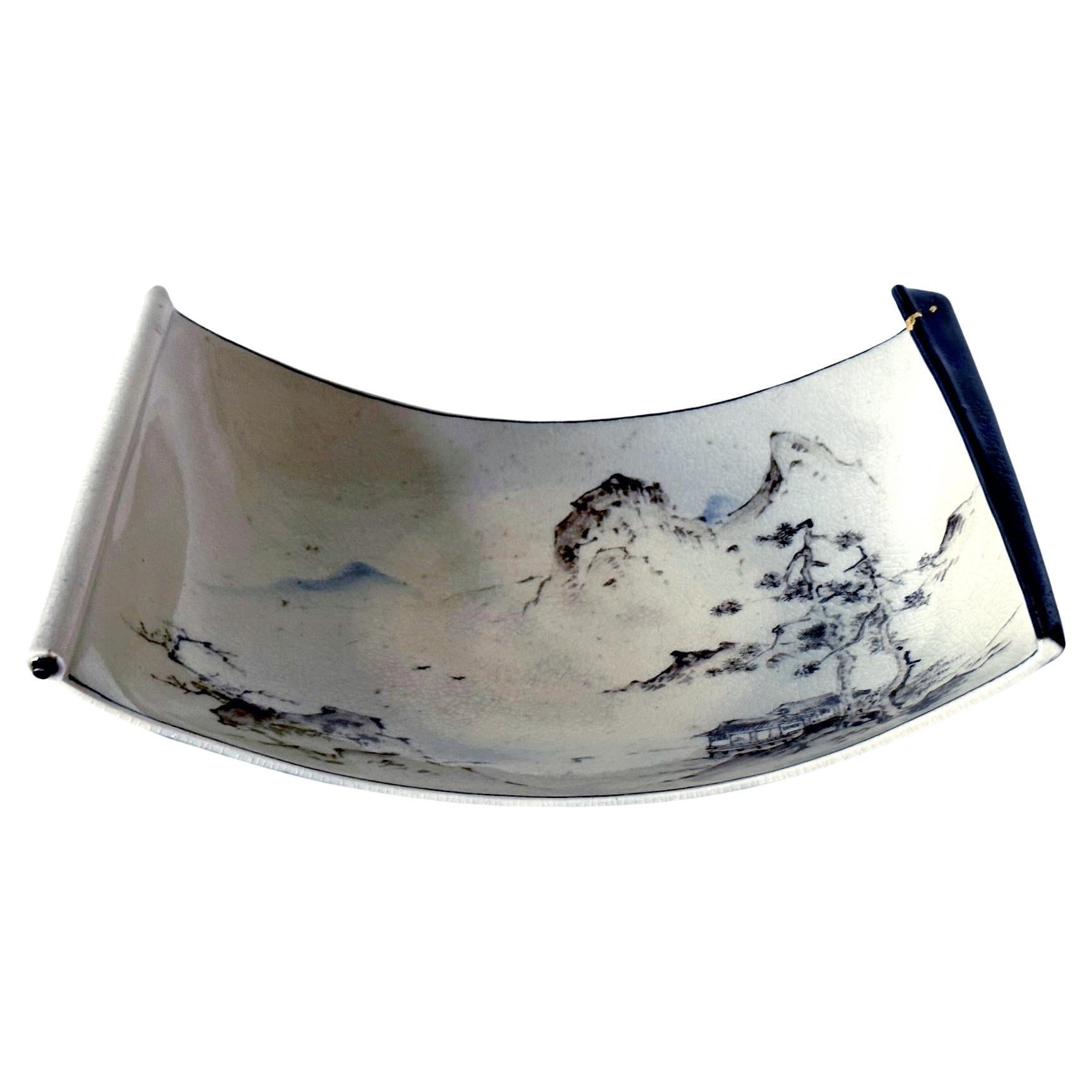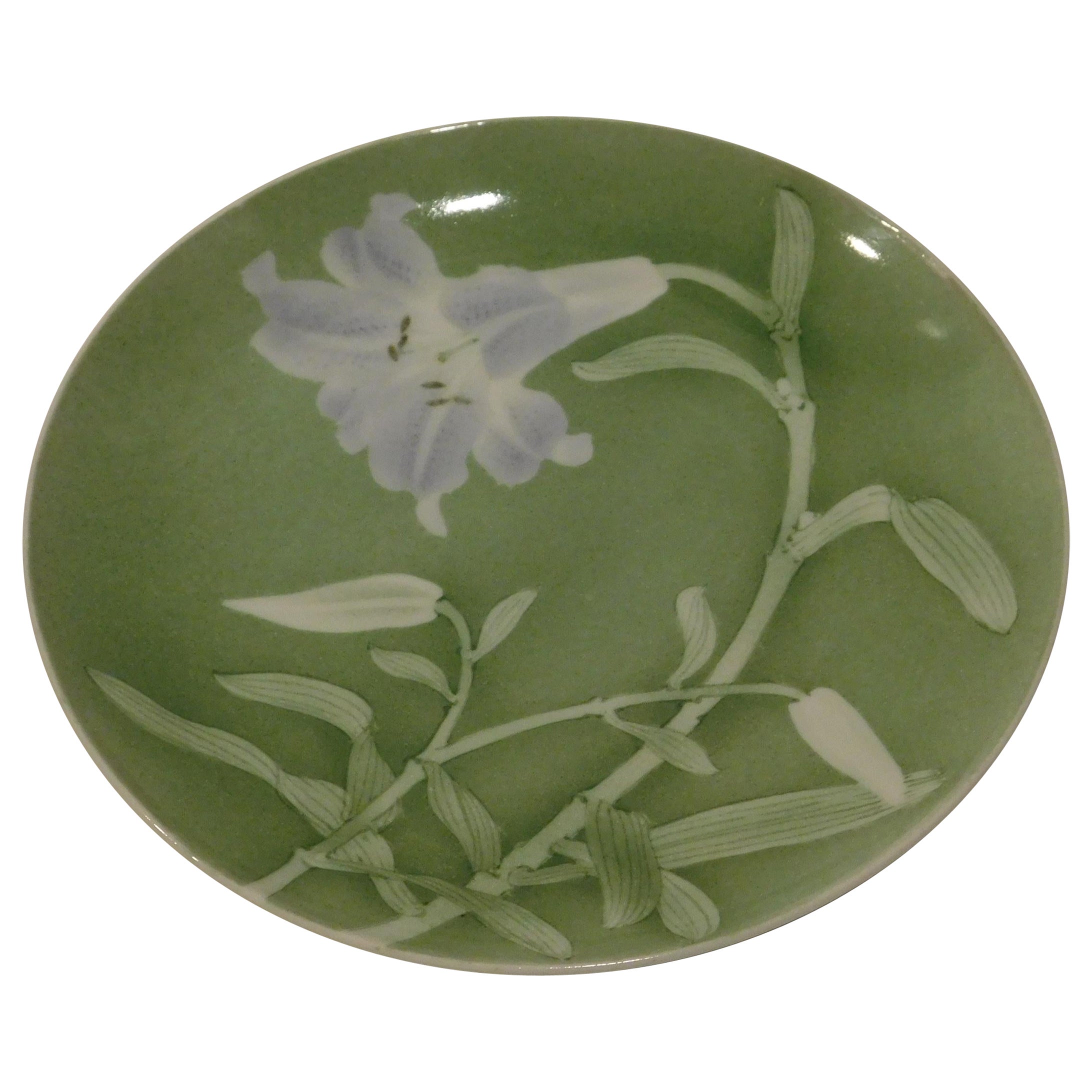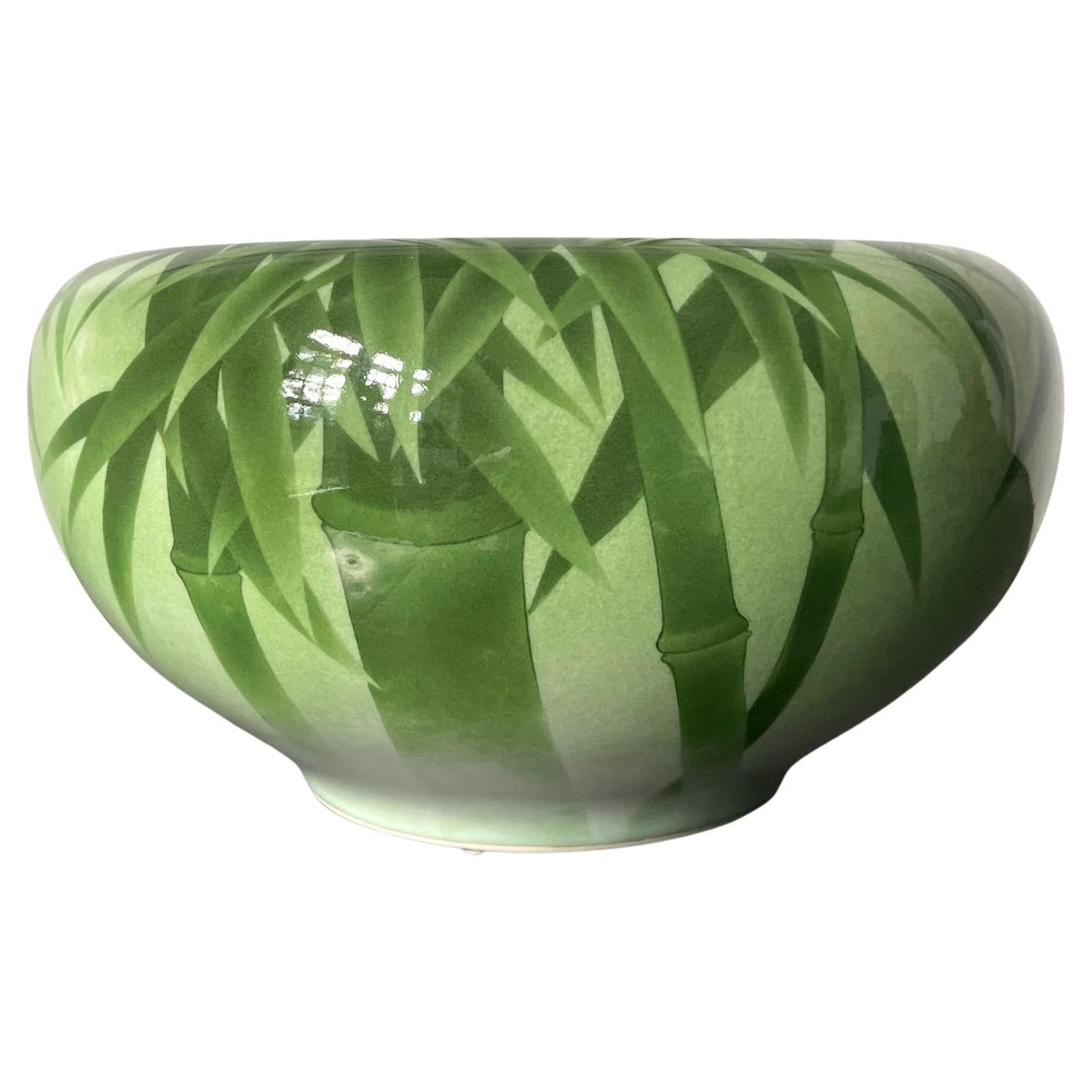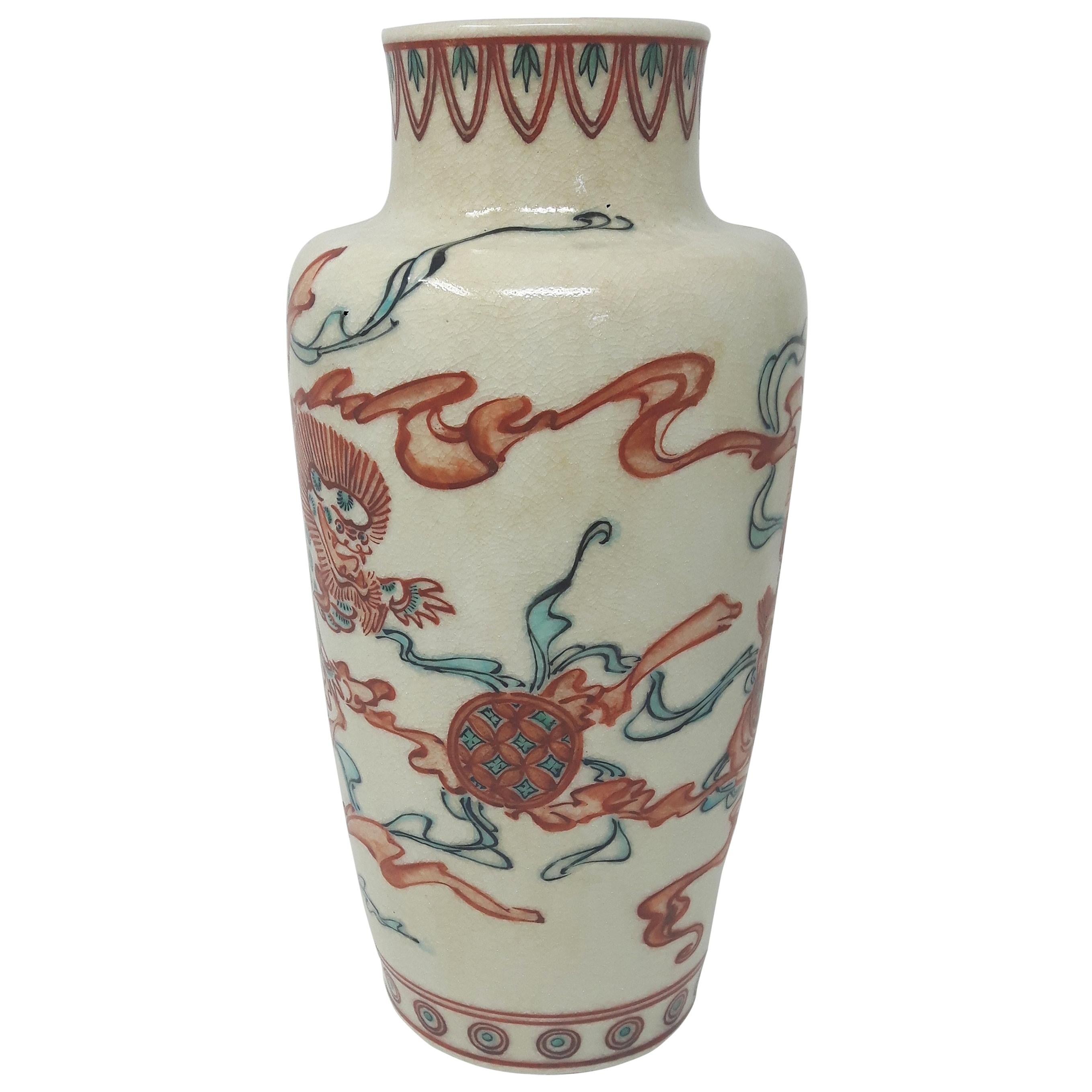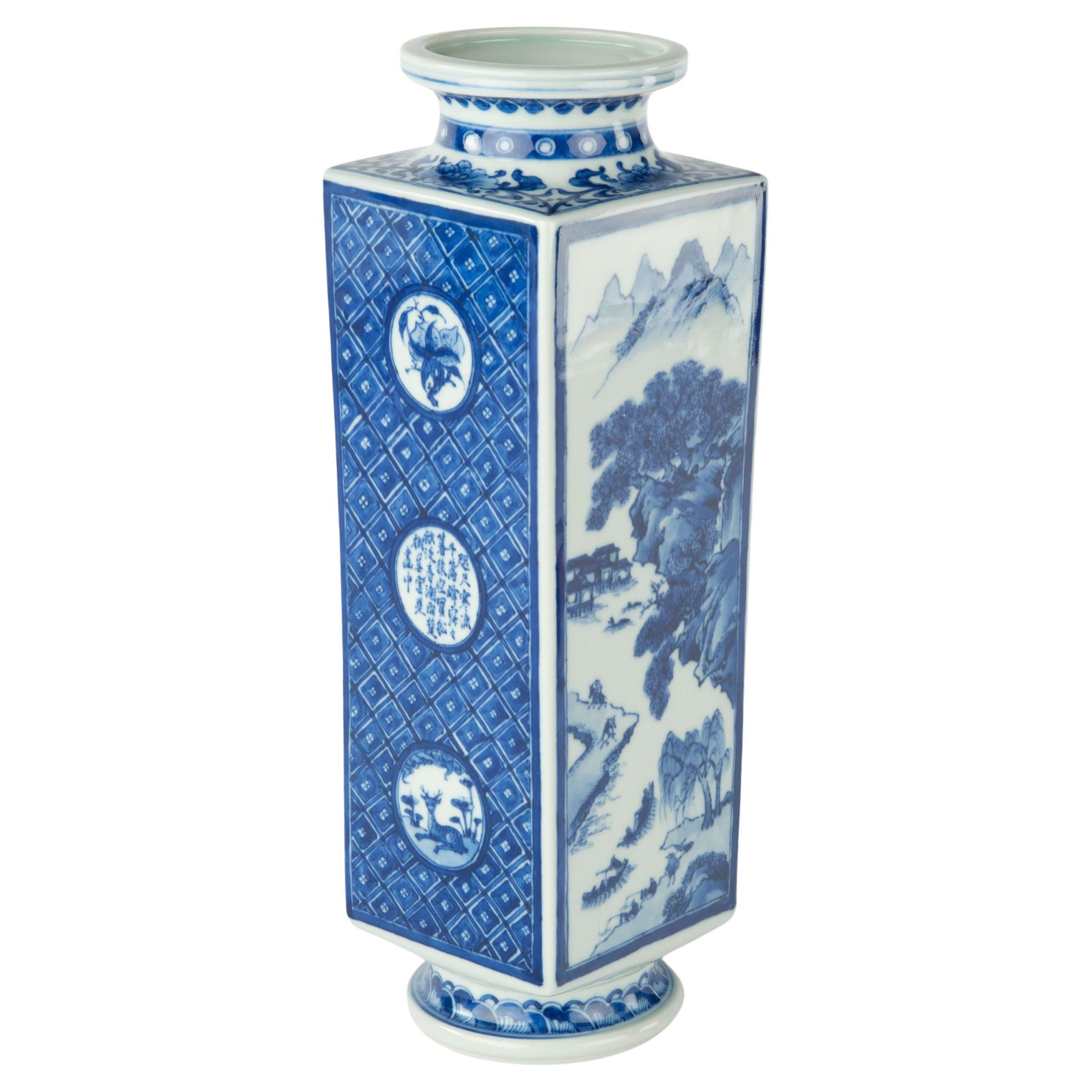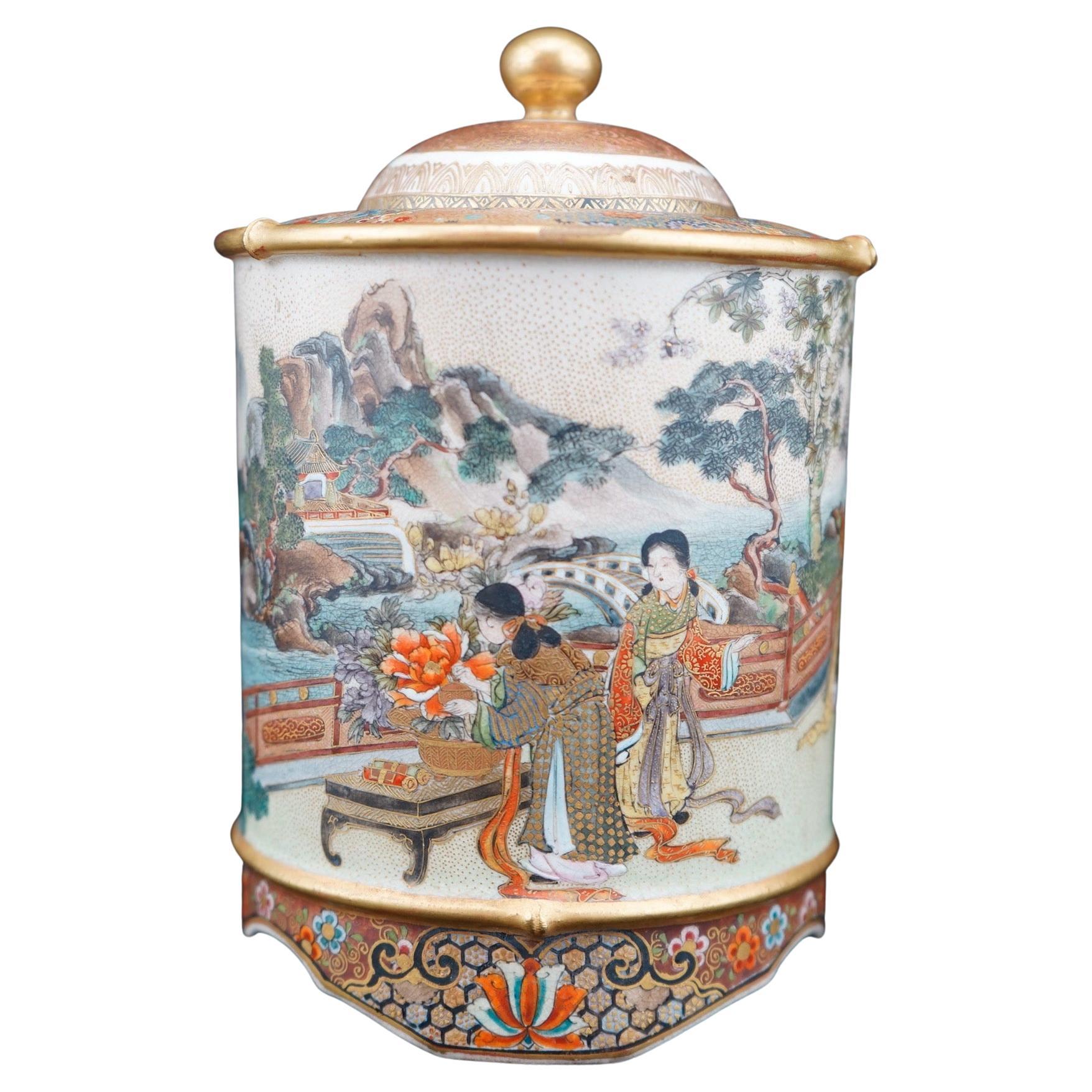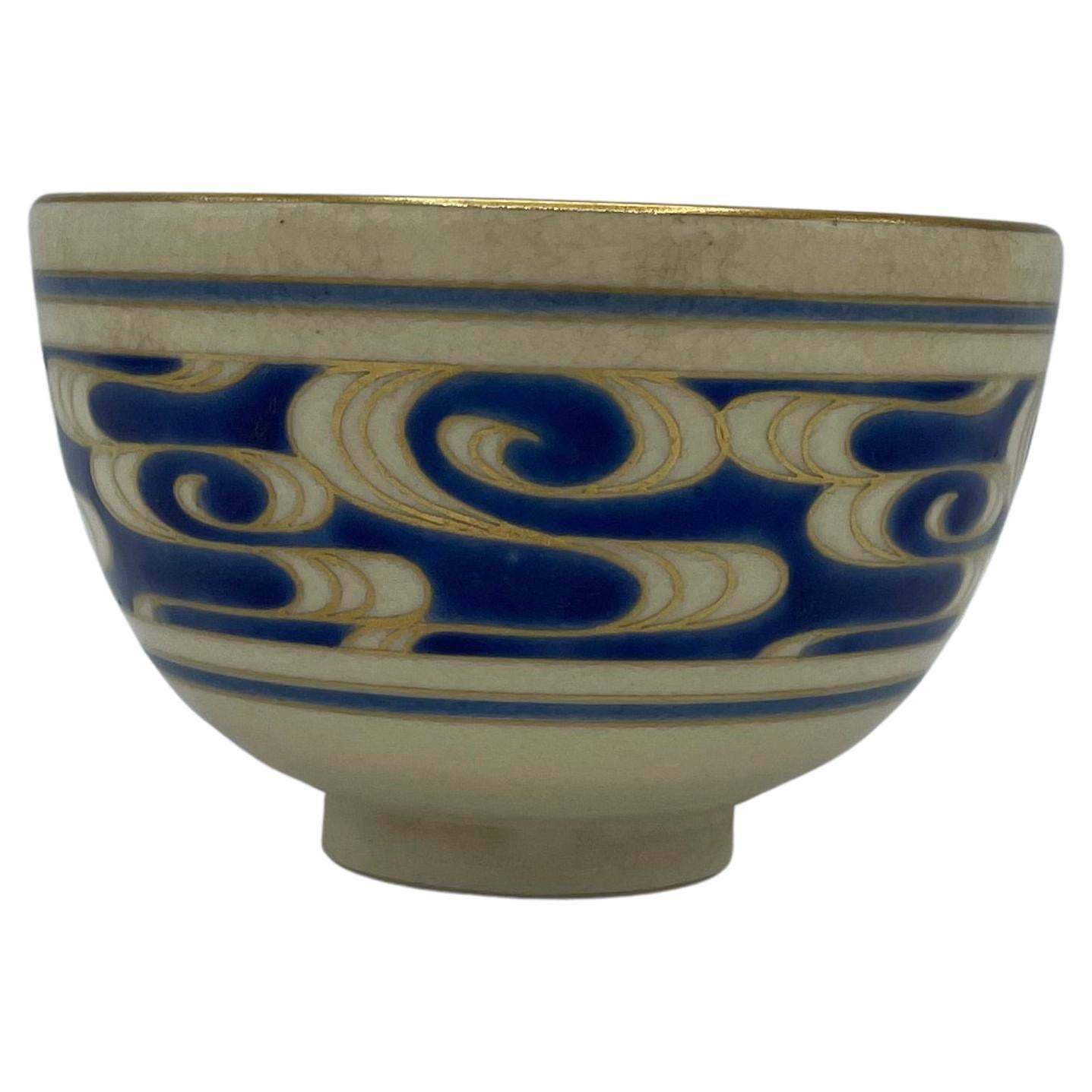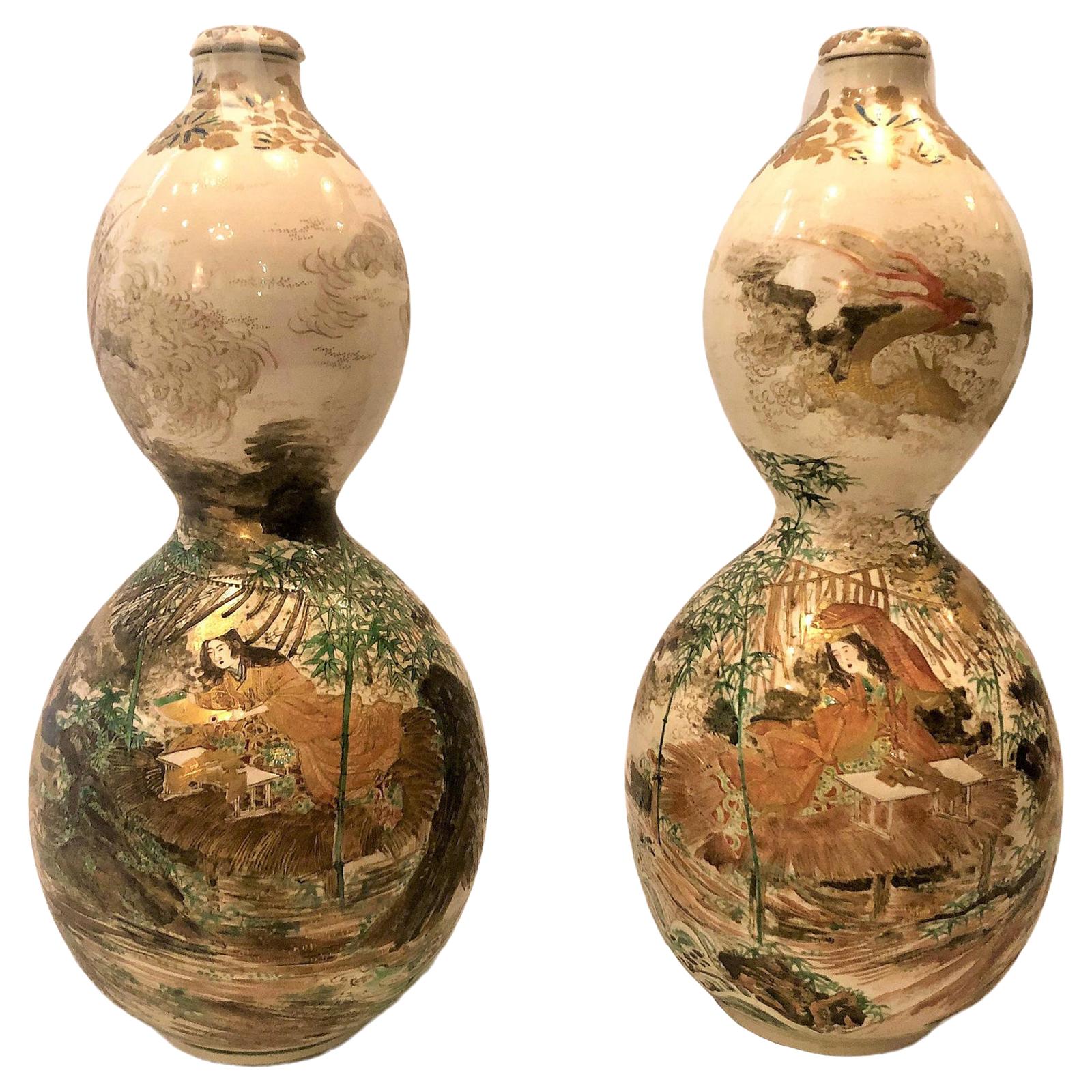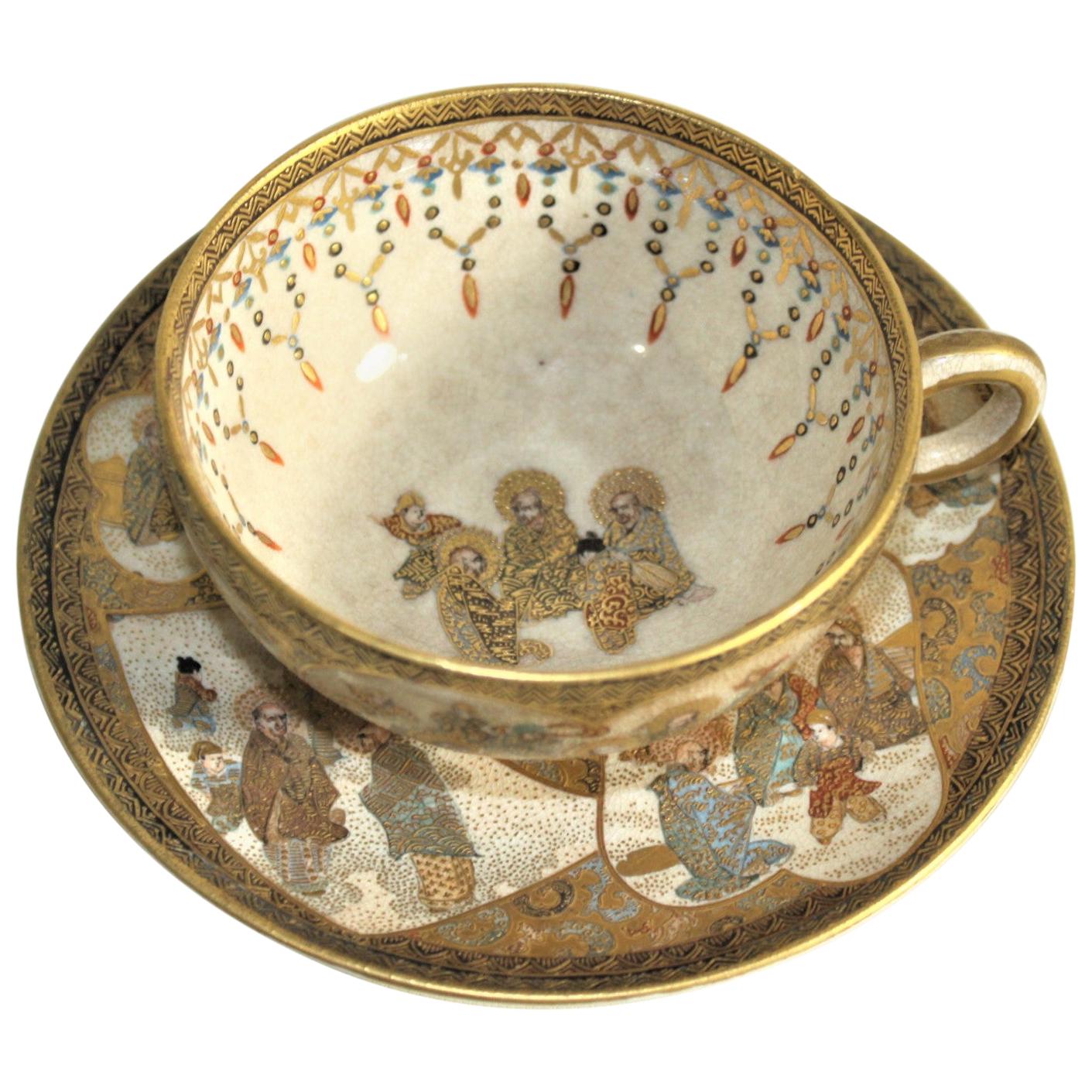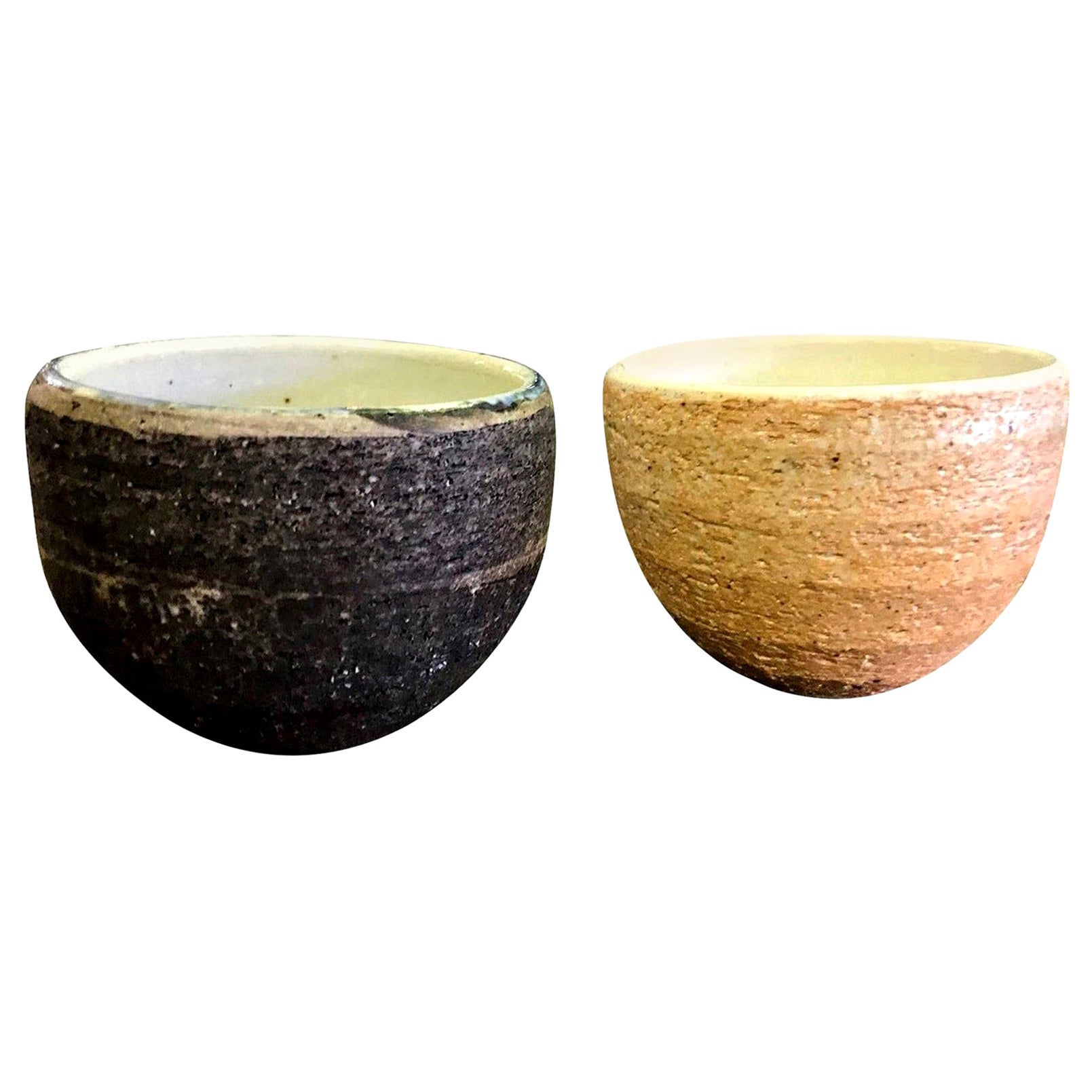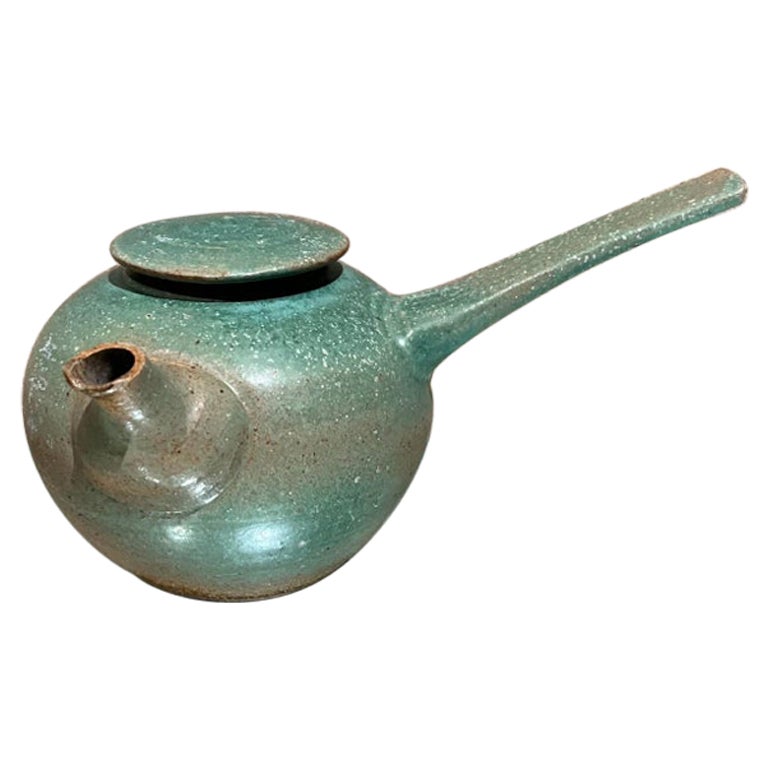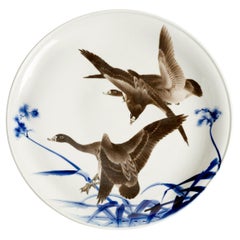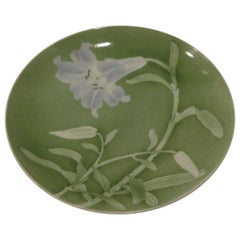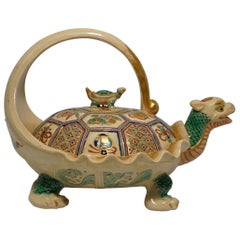
Japanese Satsuma Tea Kettle, Rare ‘Minogame’ Turtle Form, Signed Makuzu Kozan
View Similar Items
1 of 12
Japanese Satsuma Tea Kettle, Rare ‘Minogame’ Turtle Form, Signed Makuzu Kozan
About the Item
- Creator:Makuzu Kozan (Artist)
- Dimensions:Height: 6.3 in (16 cm)Diameter: 8.08 in (20.5 cm)
- Materials and Techniques:
- Place of Origin:
- Period:1900-1909
- Date of Manufacture:circa 1900
- Condition:Wear consistent with age and use. Minior wear to decoration.
- Seller Location:Geelong, AU
- Reference Number:Seller: 10246311stDibs: LU1250220126192
You May Also Like
- Rare Japanese Porcelain Painted Footed Dish Makuzu KozanBy Makuzu KozanLocated in Atlanta, GAA rare footed dish in the form of an open scroll painting with literati landscape from the studio of Japanese Potter Makuzu Kozan. Also known as Miyagawa Kozan (1842–1916), Makuzu wa...Category
Antique Early 1900s Japanese Meiji Ceramics
MaterialsPorcelain
- Rare Large Japanese Porcelain Presentation Plate Makuzu KozanBy Makuzu KozanLocated in Atlanta, GAA large presentation plate with striking pictorial design from the studio of Japanese Potter Makuzu Kozan. Also known as Miyagawa Kozan (1842–1916),...Category
Early 20th Century Japanese Meiji Ceramics
MaterialsPorcelain
- Makuzu Kozan Modern Japanese Ceramic TrayBy Makuzu KozanLocated in Phoenix, AZBeautiful pale green ceramic tray featuring white lilies. It is signed on the base by Miyagawa (Makuzu) Kozan (1842-1916). This tray has no damage and is in perfect condition. It me...Category
Antique Late 19th Century Japanese Ceramics
MaterialsCeramic
- Japanese Ceramic Centerpiece Bowl Makuzu Kozan Meiji PeriodBy Makuzu KozanLocated in Atlanta, GAA beautiful ceramic vessel in the form of Bo, the so-called monk's alms bowl from the studio of Japanese Potter Makuzu Kozan, also known as Miyagawa Kozan (1842–1916), one of the most established and collected ceramist from Meiji Period. Born as Miyagawa Toranosuke, Kozan established his pottery studio in Yokohama circa 1870s and later became one of the appointed artists to the Japanese Imperial household. His work was exhibited in many international fairs that the Meiji government participated at the turn of the century and won many grand prizes. Of a relatively large size, this piece was made as a decorative center piece for display. It was brilliantly decorated with underglaze paint of a green-on-green bamboo motif, using the novel technique developed by Kozan called Fuki-e (the blow painting). As a result, the bamboos appear took on a three-dimensional quality as if appearing in a mist. Known as one of the most creative ceramists, circa 1887, Kozan started experimenting with new chemical colors from the West in the format of his porcelain glaze. New colors allowed him to create underglaze design that appeared bright, smooth and glossy. To create design that is realistic and dimensional, more common in the western paintings, he was inspired by the native Japanese ink painting technique developed around 1900 by Yokoyama Taikan...Category
Antique Early 1900s Japanese Japonisme Ceramics
MaterialsCeramic
- Unusual Early 20th Century Makuzu Kozan VaseBy Makuzu KozanLocated in London, GBDecorated in iron-red and green enamels with an overall design of three shish frolicking with a brocade ball, signed on the base with an impressed seal Makuzu. The storage box ti...Category
Early 20th Century Japanese Meiji Ceramics
MaterialsPorcelain
- Large Japanese Ceramic Vase by Makuzu KozanLocated in Christchurch, GBAs part of our Japanese works of art collection we are delighted to offer this tapering square form Meiji Period 1868-1912, ceramic vase from the studios of the highly coveted Imperi...Category
Antique 19th Century Japanese Ceramics
MaterialsCeramic
Recently Viewed
View AllMore Ways To Browse
Ancient Japanese Pottery
Large Kettle
Large Satsuma
Japanese Turtle
Square Silver Japan
Studio Pottery Lidded
Satsuma Pottery
Turtle Serveware
Japanese Satsuma Pottery
Japanese Kettle
Antique Satsuma Pottery
Large Turtle Shells
Satsuma Style
Japan Tea Kettle
Turtle Flower Art
Japanese Tea Kettle
Pottery Turtle
Large Silver Turtle
